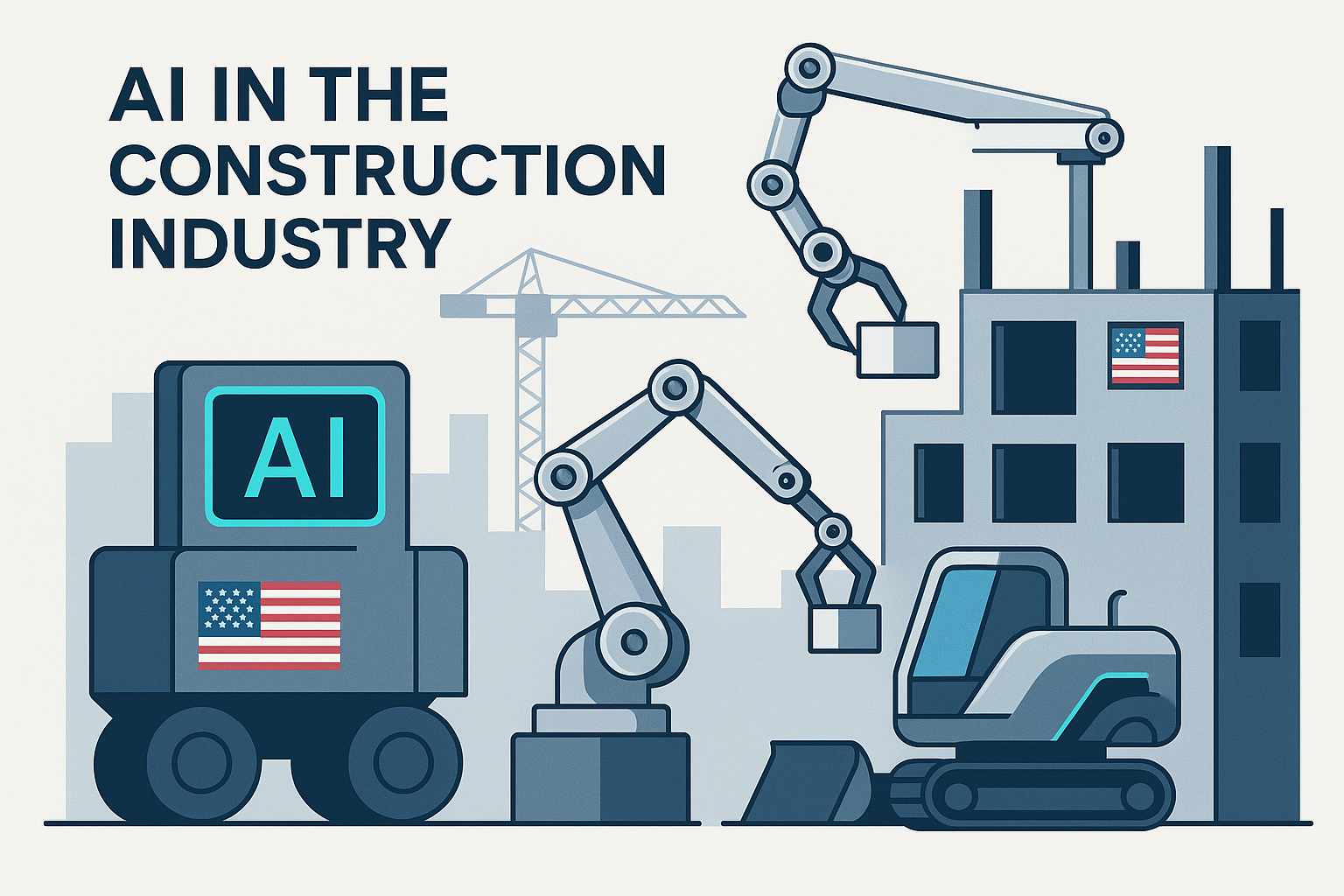
AI in Construction Industry: Transforming Building in 2025
Artificial Intelligence (AI) is revolutionizing the construction industry in the United States, driving efficiency, safety, and innovation like never before. As we move through 2025, AI in construction industry applications are reshaping how projects are designed, managed, and executed. This comprehensive guide explores the latest trends, benefits, challenges, and the top AI solutions making waves in U.S. construction.
How AI in Construction Industry Is Changing the Game
AI in construction industry settings is more than just a buzzword—it’s a practical toolkit for tackling age-old challenges. From automating repetitive tasks to predicting project risks, AI is helping construction professionals deliver projects faster, safer, and more cost-effectively.
Key Benefits of AI in Construction Industry Projects
- 🏗️ Enhanced Project Planning: AI algorithms analyze historical data to optimize schedules and resource allocation.
- 🦺 Improved Safety: Computer vision and predictive analytics help prevent accidents and identify hazards.
- 💰 Cost Savings: AI-driven budgeting tools reduce waste and control expenses.
- 📈 Productivity Boost: Automation of routine tasks frees up skilled workers for higher-value activities.
- 🏢 Quality Control: AI-powered inspections ensure compliance and catch defects early.
TIP: Embracing AI in construction industry operations can lead to a 20-30% reduction in project delays and cost overruns, according to the latest U.S. industry data for 2025.
Top 10 AI Applications in Construction Industry (2025)
AI is being deployed across every phase of construction. Here are the top 10 AI applications transforming the U.S. construction landscape in 2025:
- Project Scheduling Optimization
- Predictive Maintenance for Equipment
- Automated Site Monitoring with Drones
- AI-Driven Safety Analytics
- Generative Design and BIM Integration
- Robotic Process Automation (RPA) for Back-Office Tasks
- Material Management and Supply Chain Optimization
- AI-Based Quality Inspections
- Construction Risk Assessment
- Virtual Assistants for Field Workers
Side-by-Side Comparison Table: Top 10 AI Applications in Construction
| Rank | AI Application | Main Benefit | Typical Use Case |
|---|---|---|---|
| 1 | Project Scheduling Optimization | Faster project delivery | Dynamic scheduling adjustments |
| 2 | Predictive Maintenance for Equipment | Reduced downtime | Equipment health monitoring |
| 3 | Automated Site Monitoring with Drones | Real-time site insights | Progress tracking, safety checks |
| 4 | AI-Driven Safety Analytics | Fewer accidents | Hazard detection, alerts |
| 5 | Generative Design and BIM Integration | Innovative, efficient designs | Automated design alternatives |
| 6 | RPA for Back-Office Tasks | Lower admin costs | Invoice processing, payroll |
| 7 | Material Management & Supply Chain | Less waste, on-time delivery | Inventory tracking, procurement |
| 8 | AI-Based Quality Inspections | Higher build quality | Defect detection, compliance |
| 9 | Construction Risk Assessment | Fewer project surprises | Early risk identification |
| 10 | Virtual Assistants for Field Workers | Improved communication | On-site info, task reminders |
AI in Construction Industry: Real-World Examples
Project Scheduling Optimization
AI-powered platforms analyze thousands of project variables to create the most efficient schedules. For example, U.S. contractors use AI to adjust timelines in real time based on weather, labor availability, and supply chain disruptions.
Predictive Maintenance
Sensors and AI models monitor heavy machinery, predicting failures before they happen. This proactive approach reduces costly downtime and extends equipment life.
Automated Site Monitoring
Drones equipped with AI-powered cameras scan construction sites, providing up-to-date progress reports and identifying safety hazards without human intervention.
Challenges of AI in Construction Industry Adoption
While the benefits are clear, integrating AI in construction industry workflows comes with hurdles:
- 🛠️ Data Quality: AI relies on accurate, comprehensive data, which can be a challenge for firms with legacy systems.
- 🏢 Change Management: Shifting company culture and retraining staff are significant undertakings.
- 💸 Upfront Investment: AI solutions require initial capital, though ROI is often realized quickly.
- 🔒 Cybersecurity: Protecting sensitive project and company data is paramount.
TIP: Start small by piloting AI on a single project before scaling across your organization.
The Future of AI in Construction Industry: 2025 and Beyond
The U.S. construction sector is poised for even greater AI-driven transformation. In 2025, expect to see:
- 🤖 Widespread Use of Robotics: AI-guided robots for bricklaying, welding, and demolition.
- 🏙️ Smart Cities Integration: Construction projects that feed real-time data into city-wide AI systems.
- 🌱 Sustainability Gains: AI optimizing energy use and reducing waste on job sites.
Conclusion
AI in construction industry applications are fundamentally reshaping how American builders plan, execute, and deliver projects in 2025. From smarter scheduling and predictive maintenance to automated safety monitoring and quality control, AI is driving unprecedented efficiency, safety, and innovation. While challenges like data quality and change management remain, the benefits—cost savings, productivity, and improved outcomes—are too significant to ignore. As AI technology continues to evolve, construction companies that embrace these tools will lead the way in building the future of America. Now is the time to invest in AI and secure your place at the forefront of the construction revolution.